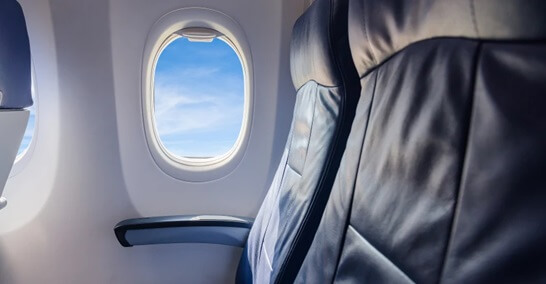Why Are Window Shades Required to Be Open During Takeoff and Landing?
Keeping airplane window shades open during takeoff and landing serves a crucial purpose, although not all airlines enforce this rule. The decision hinges on your choice of carrier. While open window shades can provide passengers with magnificent views during the flight and an opportunity to rest peacefully when lowered, the debate on whether to keep them up or down during takeoff and landing continues. However, the practice largely depends on the airline's policy.
Which airlines mandate open window shades during takeoff and landing? The International Air Transport Association (IATA), a trade group representing over 300 global airlines and guiding industry policies, endorses keeping window shades open during takeoff and landing as best practice. This recommendation aligns with guidelines from the International Civil Aviation Organization, a specialized United Nations agency responsible for international air navigation and aviation safety.
In practice, individual airlines have the final say. Generally, international carriers like British Airways request passengers to keep the window shades open during takeoff and landing, but this isn't the case with U.S. airlines. Very few U.S. carriers enforce this requirement.
Why do U.S. airlines differ? The Federal Aviation Administration (FAA), which sets minimal standards for aircraft operations and safety in the United States, doesn't have a specific regulation regarding window shades. Instead, it allows individual airlines to decide, and most choose not to.
In February 2022, United Airlines briefly became the first U.S. carrier to request passengers to open their window shades, but it later withdrew the policy in March 2022 to maintain alignment with other carriers and offer clearer guidance to travelers. It was a request, not a requirement.
United Airlines confirmed in an email statement to AFAR that they still "encourage but do not require window shades to be open." Their goal is to enhance visibility during takeoff and landing.
What's the rationale behind keeping window shades open during takeoff and landing? The primary reason for keeping window shades open during takeoff and landing, which are the most critical phases of a flight, is safety. In case of an emergency, flight attendants are trained to assess the outside for debris, fire, or smoke before initiating an evacuation.
Having all window shades open facilitates a faster and more efficient safety check. This is why most airlines ensure that exit-row window shades are open during takeoff and landing, irrespective of their policy for regular rows.
KLM, for example, mandates that "flight attendants must ensure that [shades] are open at the emergency exits during take-off." This is essential for checking outside conditions in emergency situations.
Passengers in exit rows may be called upon to assist with this safety check if a flight attendant is not nearby or unable to do it themselves. This responsibility may involve observing external conditions before opening the exit door.
Open window shades offer other advantages during takeoff and landing. They help passengers' eyes adjust to the outside light, which is crucial in an emergency. This adjustment ensures that passengers are prepared for exterior conditions, whether it's bright daylight or nighttime, in case an evacuation is necessary. It's also why cabin lights are typically dimmed during takeoff and landing.
Moreover, open window shades allow ground emergency personnel to assess the cabin for fire or smoke during an emergency landing or crash.
Different types of window shades on various aircraft On certain regional jets like the CRJ-900 operated under Delta Connection or American Eagle, the first-class passenger in seat 1A is advised to keep the window shade open. Flight attendants in the galley lack full-size windows, and they may need the view from the passenger's window to determine if it's safe to open the emergency door. In some regional jets, there may be no window shade on the exit-row window, ensuring a clear line of sight for the flight attendant.
You may have noticed that exit-row window shades often close from the bottom to the top instead of the usual top-to-bottom motion. This design is due to the release handle for the exit door being located above the window, leaving no space for the shade to be stowed in the up position. This design also prevents the shade from accidentally closing during a hard landing or crash, which could obstruct the view.
Newer aircraft like the Boeing 787 Dreamliner and Airbus A350 have eliminated traditional window shades in favor of electronic dimming features that maintain visibility while providing shading. There's also a locking mechanism that the crew can use to keep the windows transparent during takeoff and landing.
Has this rule actually saved lives? There have been instances where passengers observed unusual events through their windows and promptly alerted the crew. For instance, a United Airlines passenger on a flight from Newark to Venice reported a significant fuel leak from the wing, potentially averting an in-flight disaster. In a 2013 incident on a British Airways flight, when engine covers opened after takeoff, the problem was visible through the windows, enabling the crew to execute a swift emergency landing.

